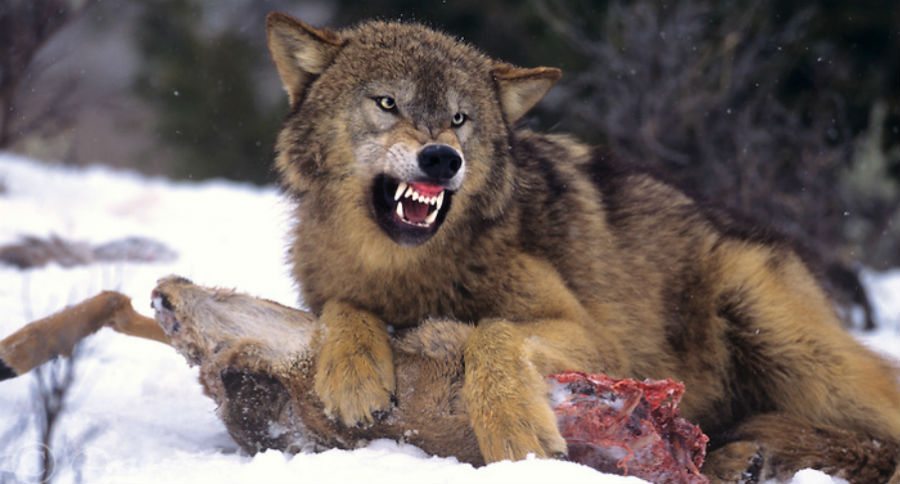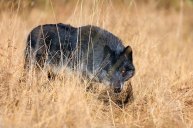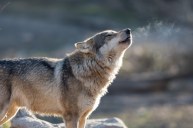The Wisconsin gray wolf population continues to grow and far exceed the state's management goals, and payouts for dog deaths at the fangs of wolves follows suit.
As the wolf population continues to grow unabated in Wisconsin, so too are the state's payouts to bear hunters for dog deaths and farmers for livestock losses due to wolf depredation.
In 1999, Wisconsin set a wolf management plan goal at 350 wolves. The current wolf population in the state is around 950 animals. That's almost three times the initial management goal.
But then in 2016, 41 dogs were reported killed and Wisconsin paid $2,500 per dog to the owners. That's $99,400 in payouts, which went primarily to bear hunters who run their dogs through territory also occupied by wolves. Farmers also received over $123,000 in payouts for livestock losses that year, with more than 150 cows, calves, chickens, turkeys, horses, and other various critters killed by wolves.
There is some variance in the numbers as the total payouts in a calendar year may or may not be the same year that depredation took place, but in total the state paid around $200,000 for animal losses due to wolf depredation.
State Sen. Tom Tiffany, R-Hazelhurst, said that the correlation between the rising wolf population and rise in payouts for animals killed by the predators is obvious, and that the state needs the authority to actively control the population.
"Wolves are having a really harmful effect on farmers in northern Wisconsin, and that is steadily moving south. We're seeing wolf damage to dairy farmers in Shawano County, and we've seen sheep farmers around Wisconsin Rapids get hit by wolves," Tiffany said. "Control measures need to be put in place, and the sooner Congress delists, the better."
Since wolves first re-entered Wisconsin their population has risen steadily with the exception of 2012-2014 when they were delisted and the state enabled hunters and trappers to harvest around 500 animals. In 2014 a federal judge again gave them endangered status, effectively stymieing state management of the species.
The wolves rebounded more than ever following the culling.
But wolf advocates are against any kind of state management of the species through hunting or trapping. They tend to downplay any correlation between the wolf population and livestock and dog deaths, and blame the practices of bear hunters in training their dogs in areas where wolves live, which is growing ever more expansive as the population continues to skyrocket.
Legislation has been introduced to Congress and is awaiting a vote on whether to return management of wolves to the states - specifically in Wisconsin, Minnesota and Michigan - and remove the federal protection barrier.
Like what you see here? You can read more great articles by David Smith at his Facebook page, Stumpjack Outdoors.
NEXT: Gray Wolf Chases a Deer Through Timber on Stunningly Clear Video
WATCH
https://rumble.com/embed/u7gve.v3ttl9/




